Tourism is an important part of the government’s strategy in maintaining the flow of foreign cash into the emirate. Besides shopping, Dubai has undertaking large scale construction projects and have built incredible sporting and entertainment venues. As of 2010 Dubai was the 7th most visited city in the world with 7.6 million visitors and by 2015 is expected to receive over 15 million tourists. It has emerged as a “cosmopolitan metropolis that has grown steadily to become a global city and the cultural hub” for the Middle East.
Below in part 2 we will look at some of these wonderful projects.
Who ever heard of a 7 star hotel on its own manmade island? The Burj Al Arab meaning Tower of the Arabs is just that. It is the fourth tallest hotel in the world and stands on a reclaimed artificial island 920 feet off Jumeirah Beach. It is connected to the mainland by a bridge. The story goes that when it first opened a British journalist visited the hotel and described it as “above and beyond anything she had ever seen and called it a seven-star hotel.” The hotel management claims to have never used that term or rating in any of their advertising but they are not discouraging the use. It is designed to resemble the sail of a dhow, a type of Arabian boat. The owners wanted a building that would become an iconic statement in Dubai, like the Sydney Opera House, Big Ben in London or the Eiffel Tower in Paris.
Interestingly the hotel has only 28 double-story floors which accommodates 202 bedroom suites. The Royal Suite goes for $18,716 per night, it is listed as the 12th most expensive suite in the world.
The helipad which is 670 feet above ground has attracted a lot of media attention. Tiger Woods has teed off it, Andre Aggassi and Roger Federer played a tennis match, Aston Martin celebrated its centenary by landing the Vanquish on it and David Coulthard performed donuts in a Formula 1 racecar.
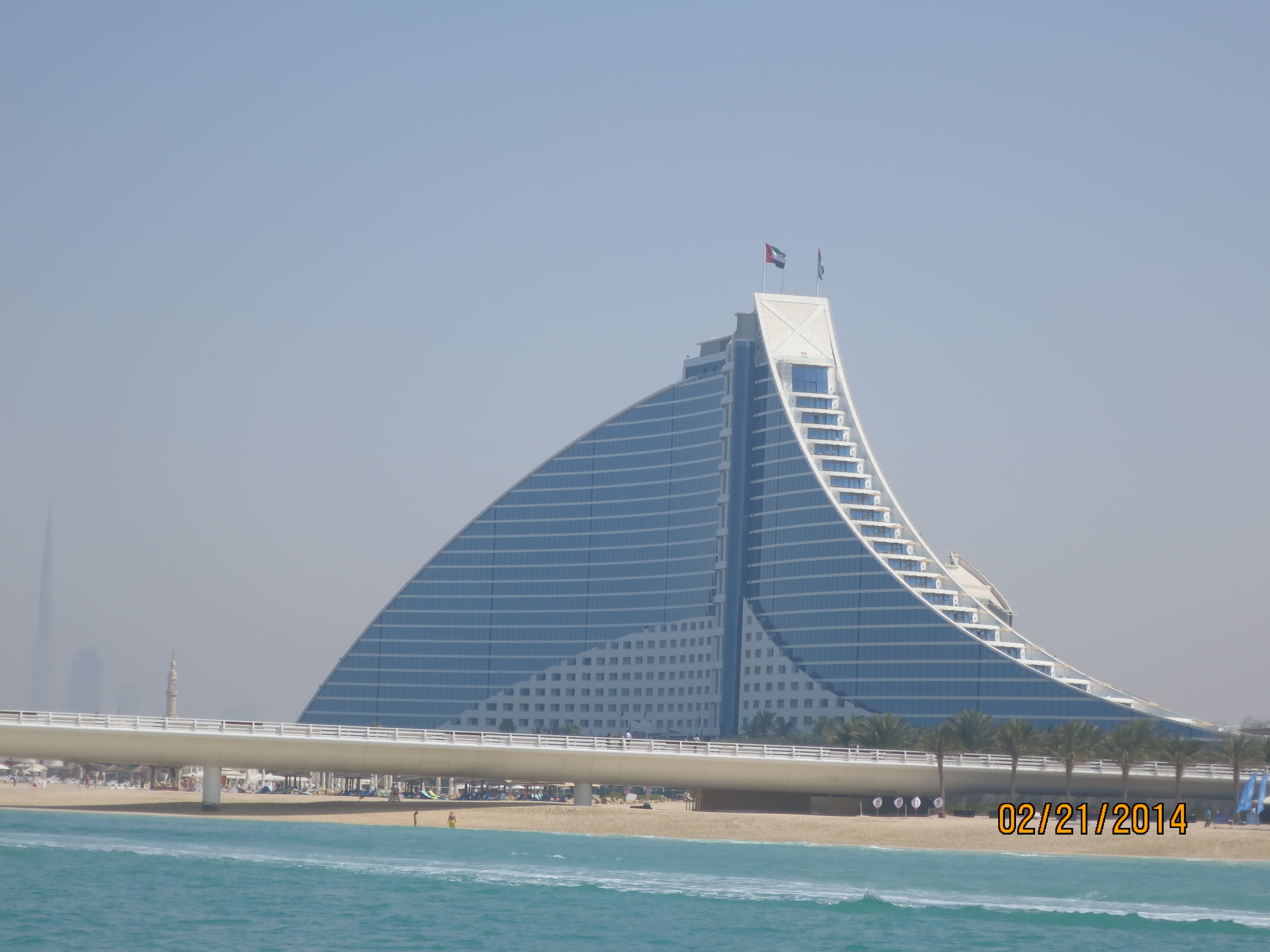
The wave shape of the Jumeirah Beach Hotel is said to complement the sail shape of the Burj Al Arab Hotel which sits just off the beach. In the foreground is the bridge to the Burj Al Arab.
The Burji Khalif is the tallest building in the world. Completed in October 2009 it stands 2,722 feet tall. It is the centerpiece of a large-scale multi-use development, that would include 30,000 homes, 19 residential towers, office buildings, parks and malls. The tower was built to “…garner more international recognition and hence investments… and …to put Dubai on the map…”. We did not get a chance to go up the tower but plan to when we return. I was able to get several photos from the taxi.
The Palm Jumeirah and the Palm Jebel Ali are two artificial islands off the coast of Dubai. They are shaped like palm trees topped with a crescent. The Palm Jebel Ali, the larger of the two , is several miles down the coast, it was started but was put on hold in 2008 and there is no date of when it will be resumed.
The Palm Jumeirah consists of a tree trunk, a crown with 17 fronds and a surrounding crescent island. It is a little over 3 miles long and 3 miles wide. The islands are made from rocks mined in Dubai and sand dredged from the gulf. Each large rock was numbered and positioned using a GPS to form the foundation and sand from the gulf was sprayed on the rocks to complete the islands. The trunk is connected to the mainland by a bridge and the crescent is connected by a subsea tunnel. The Palm island features themed hotels located in the crescent, private villas in the frond area and apartment buildings in the trunk area. It includes beaches, marinas, restaurants and retail outlets. The Palm Atlantis located in the center of the crescent is based on the myth of Atlantis. It was the first resort opened in 2008.
Open up goggle maps and in the search box cut and paste these coordinates for an overview of the palm. 25.118619, 55.135268
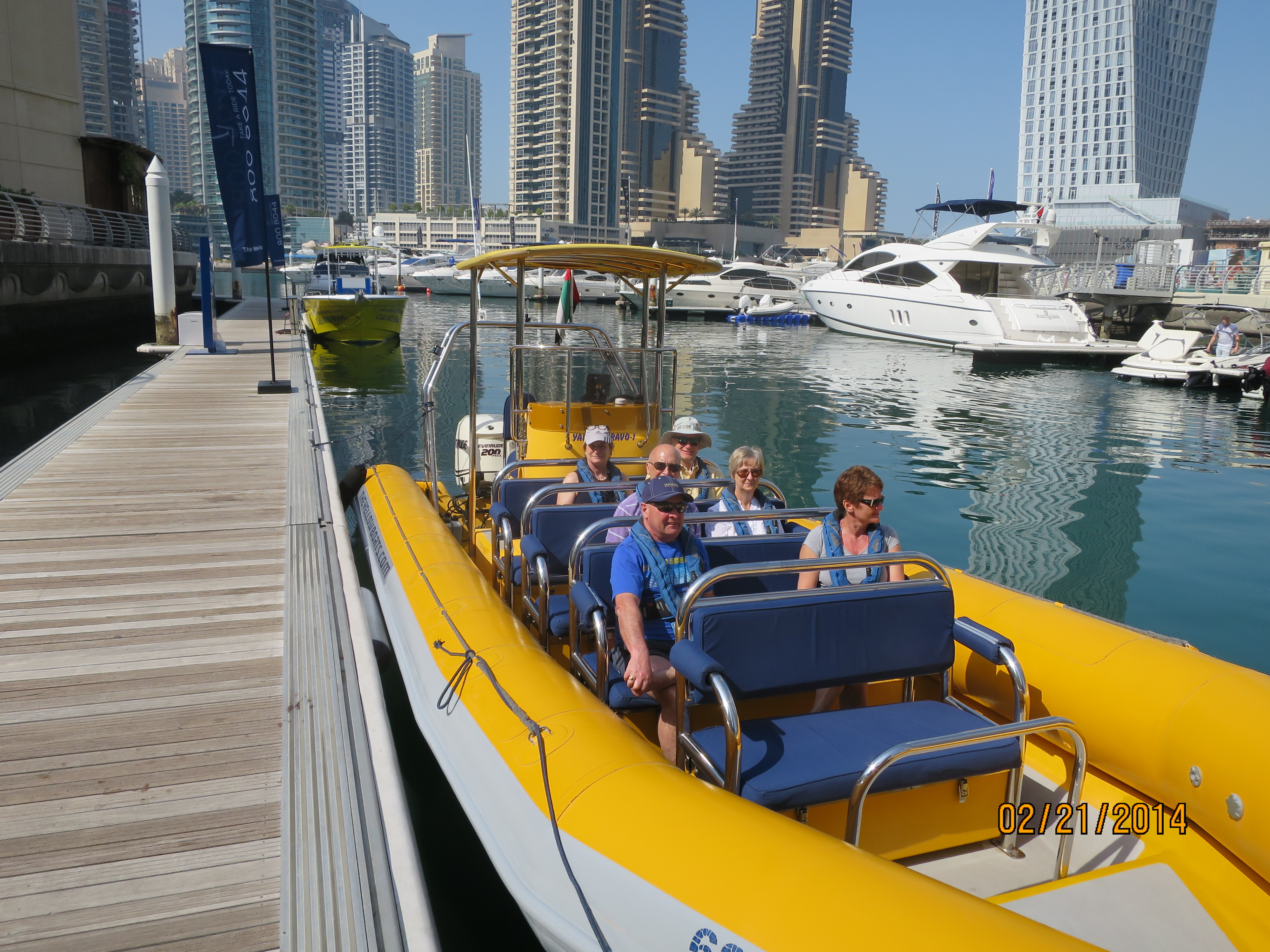
ME and I went sightseeing on the Yellow Boat Tours. A 1-1/2 hour boat ride around the Palm Jumeirah. The other two couples were from the UK, Dubai is a very popular winter destination for the English.
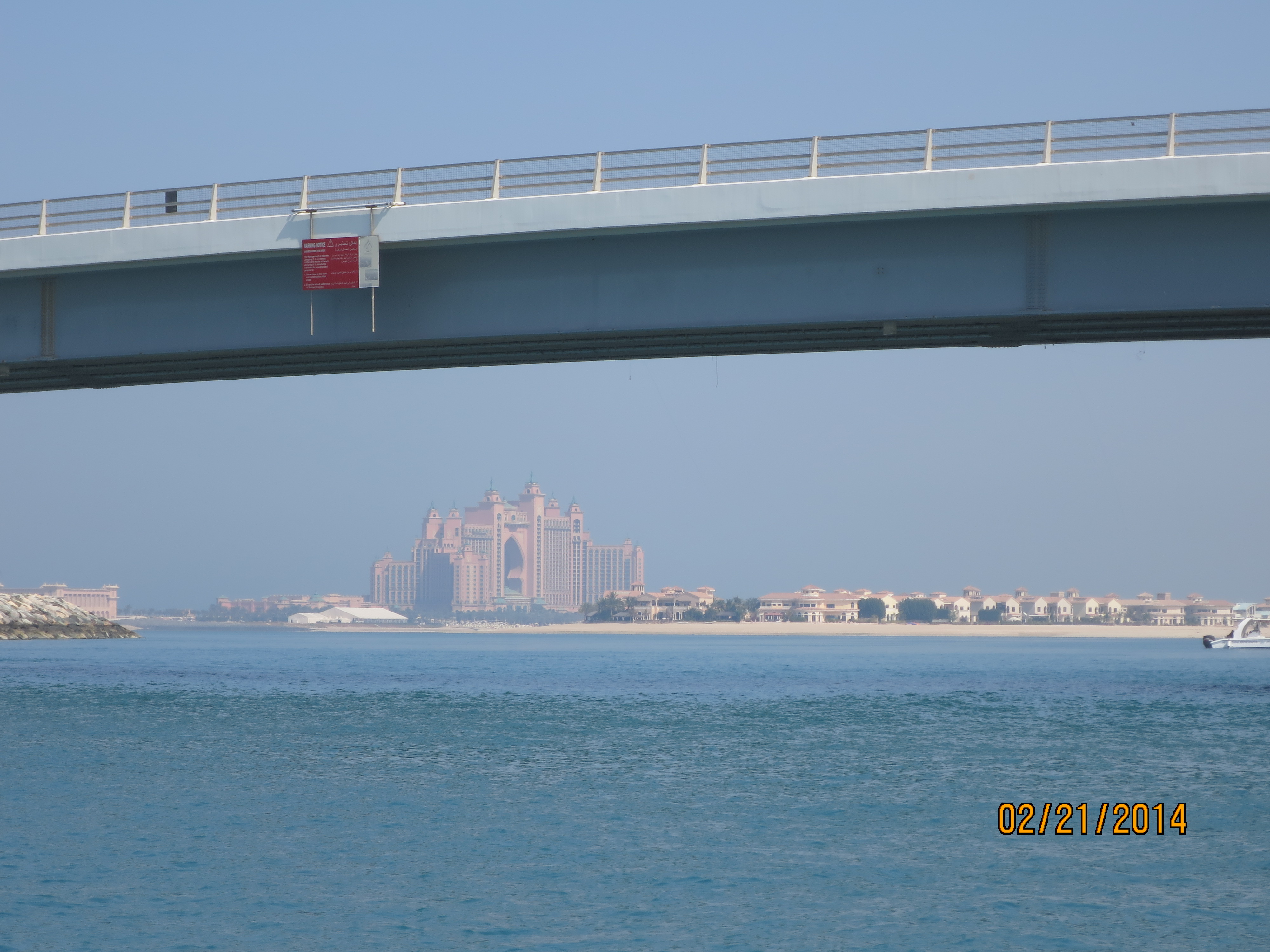
There are several channels around the crescent to allow water to flow in and out. This is the only opportunity to get a peek at the fronds and villas. To the far right you can see the back of a patrol boat. The area within the crescent is very private, patrol boats sit at every entrance. The Palm Atlantis in the background.
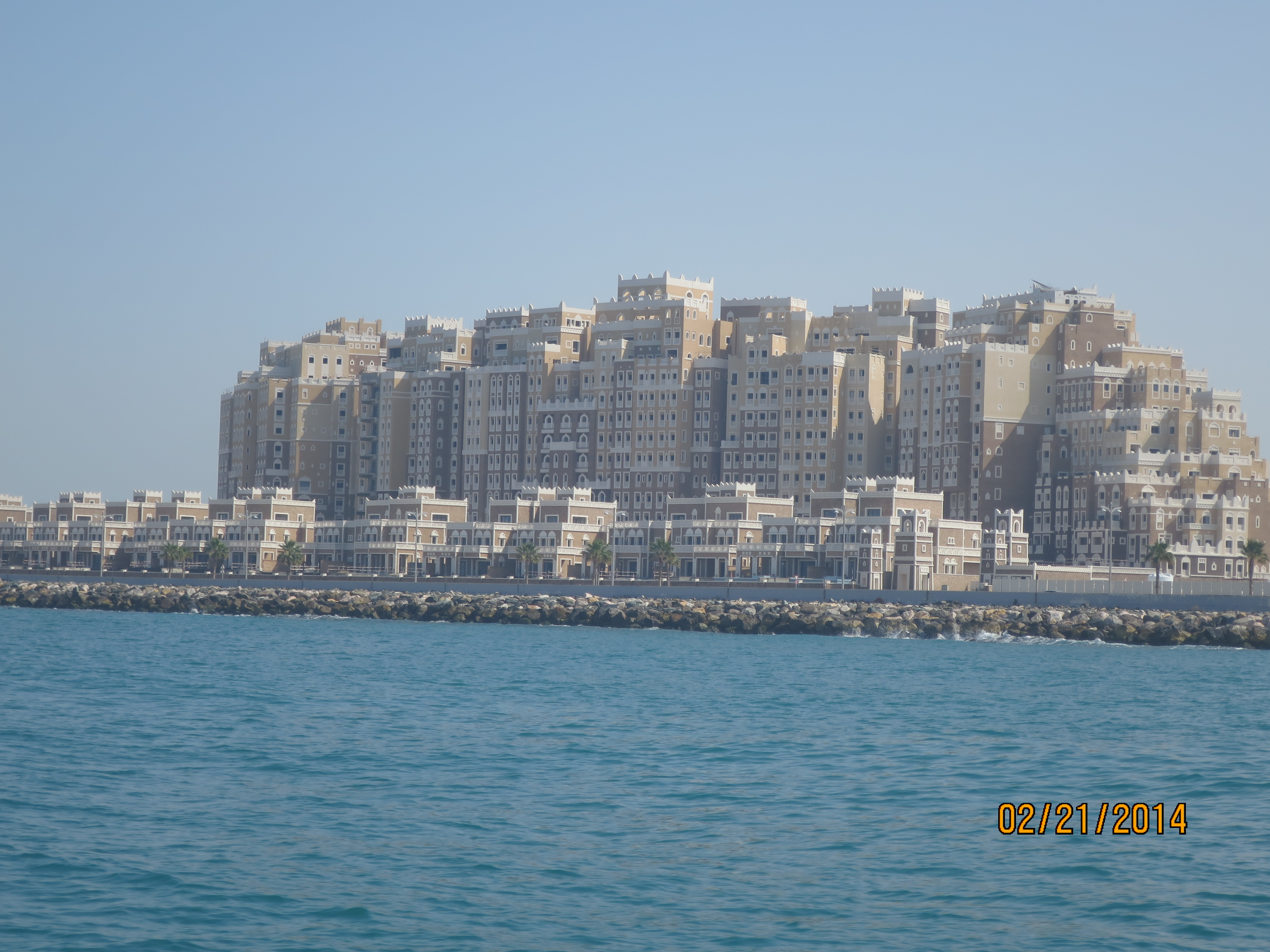
Kingdom of Sheba, just being completed, these hotels are on the crescent, the outer most part of the island looking onto the gulf
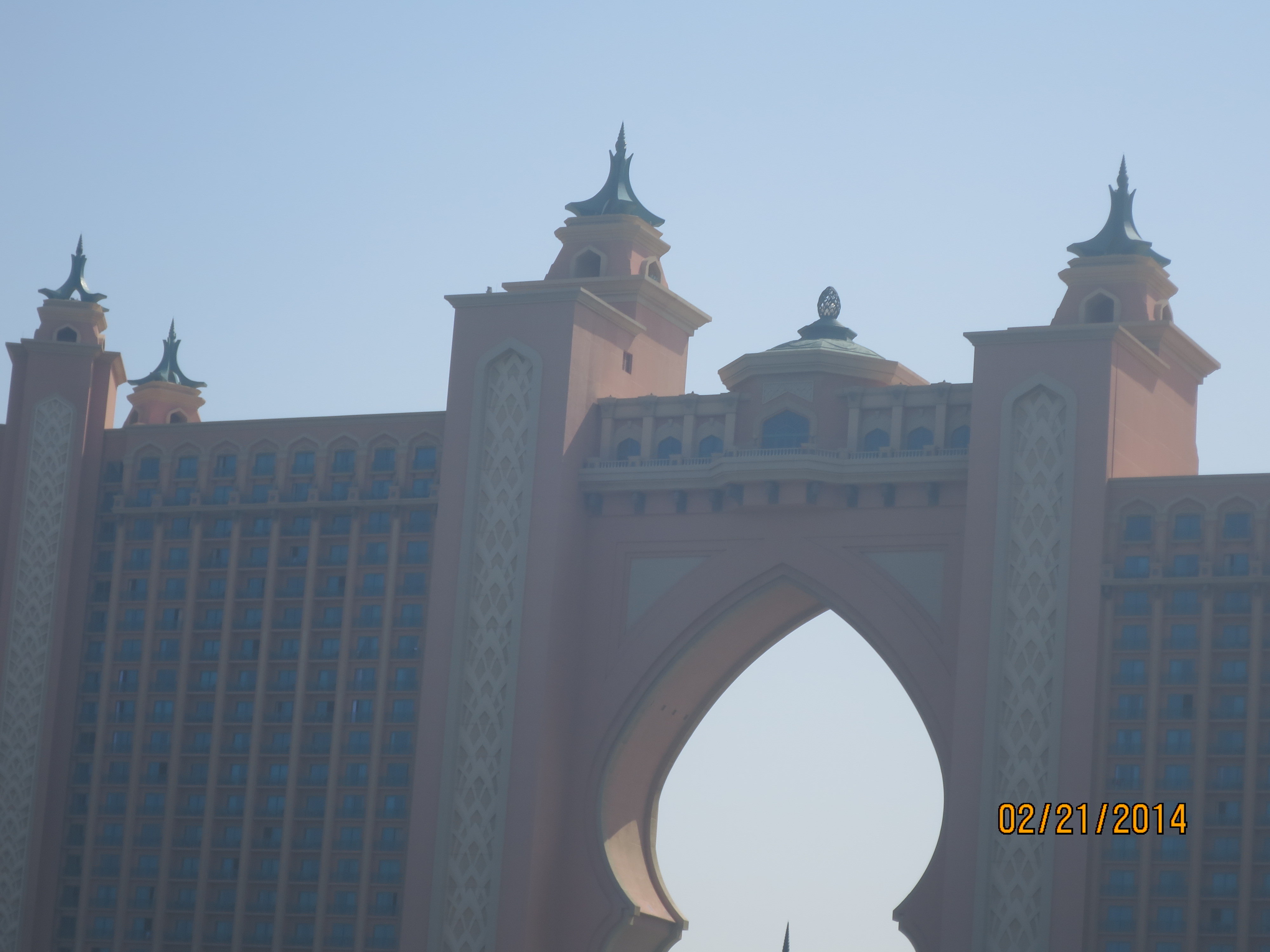
The Royal Bridge Suite, at the Atlantis, is a one of a kind suite offering the ultimate in exclusivity, privacy and luxury. It has its own team, from butlers to chefs, on hand, catering to your every wish. At 9,945 square-feet, a nights stay will set you back over $25,000.
The other island project called The World or World Islands are various small islands constructed in the rough shape of a world map, it is located 2-1/2 miles off the Dubai coast. There is a total of 300 islands. The construction stated in 2003 but due to the 2008 financial crisis the project was stopped. So far only two islands have been developed.
goggle map coordinates 25.228339, 55.169654
There has also been controversy about the building of these island projects. There has been negative impact to the surrounding environment. As a result there have been significant changes to the ecosystems, wave and erosion patterns, local marine fauna and habitat. There is also a report that the Palm is sinking at a rate of 5mm (.20″) a year. According to the Prince of Dubai the project was to be very natural so the islands were made out of only sand and rocks, no concrete was used. Because of the depleted oil reserves the decision was made to use tourism as a major source of revenue.

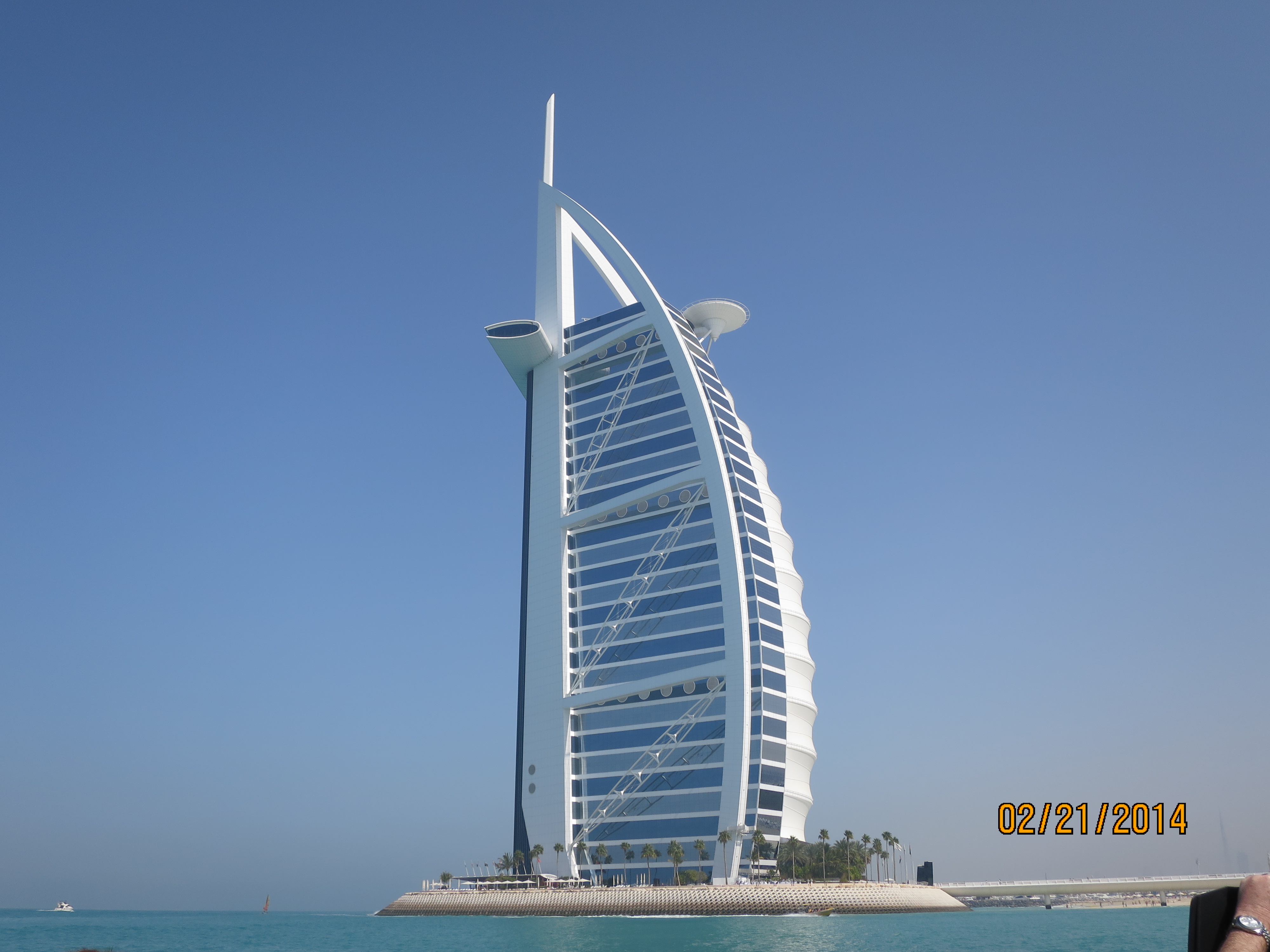
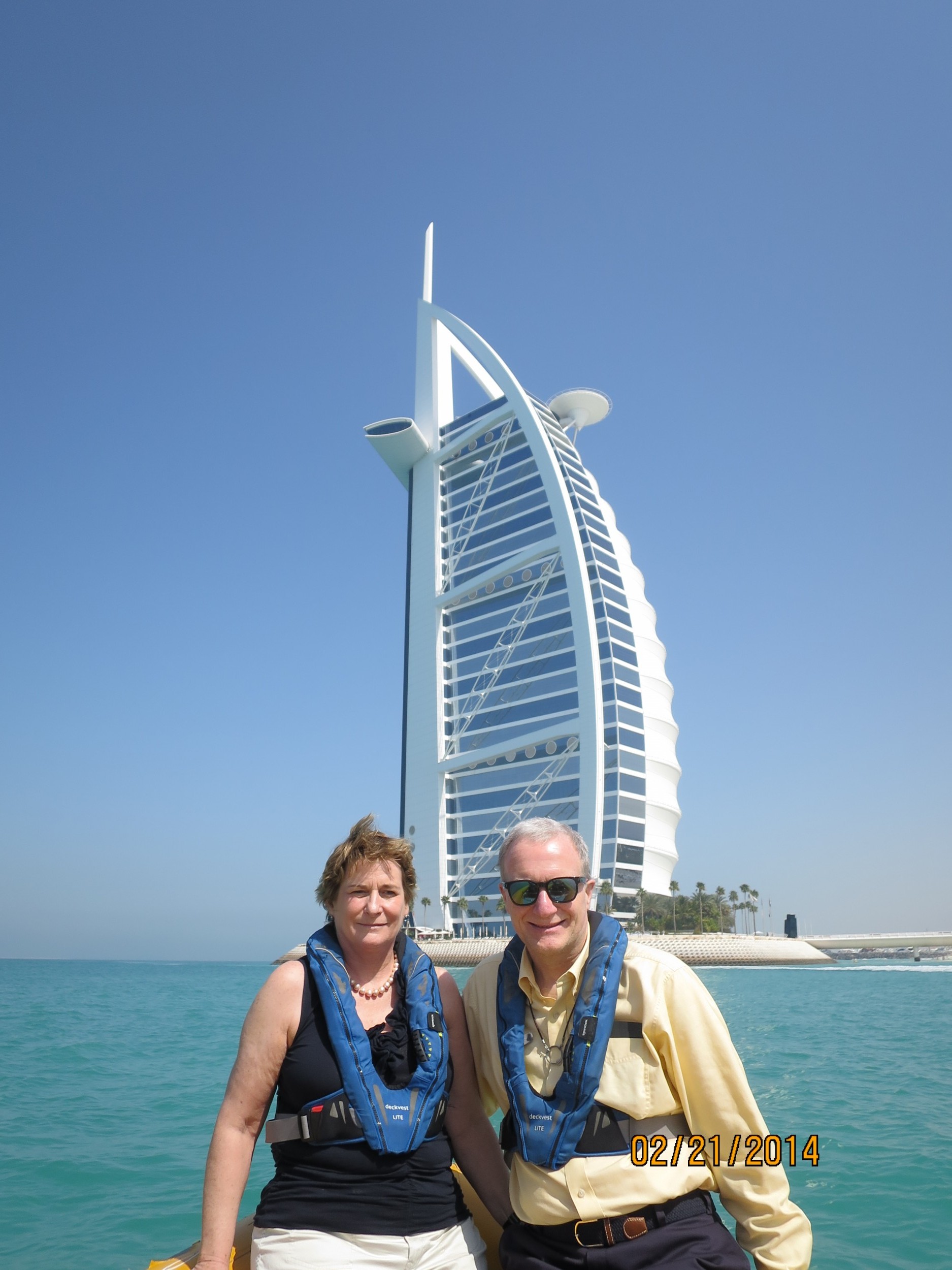
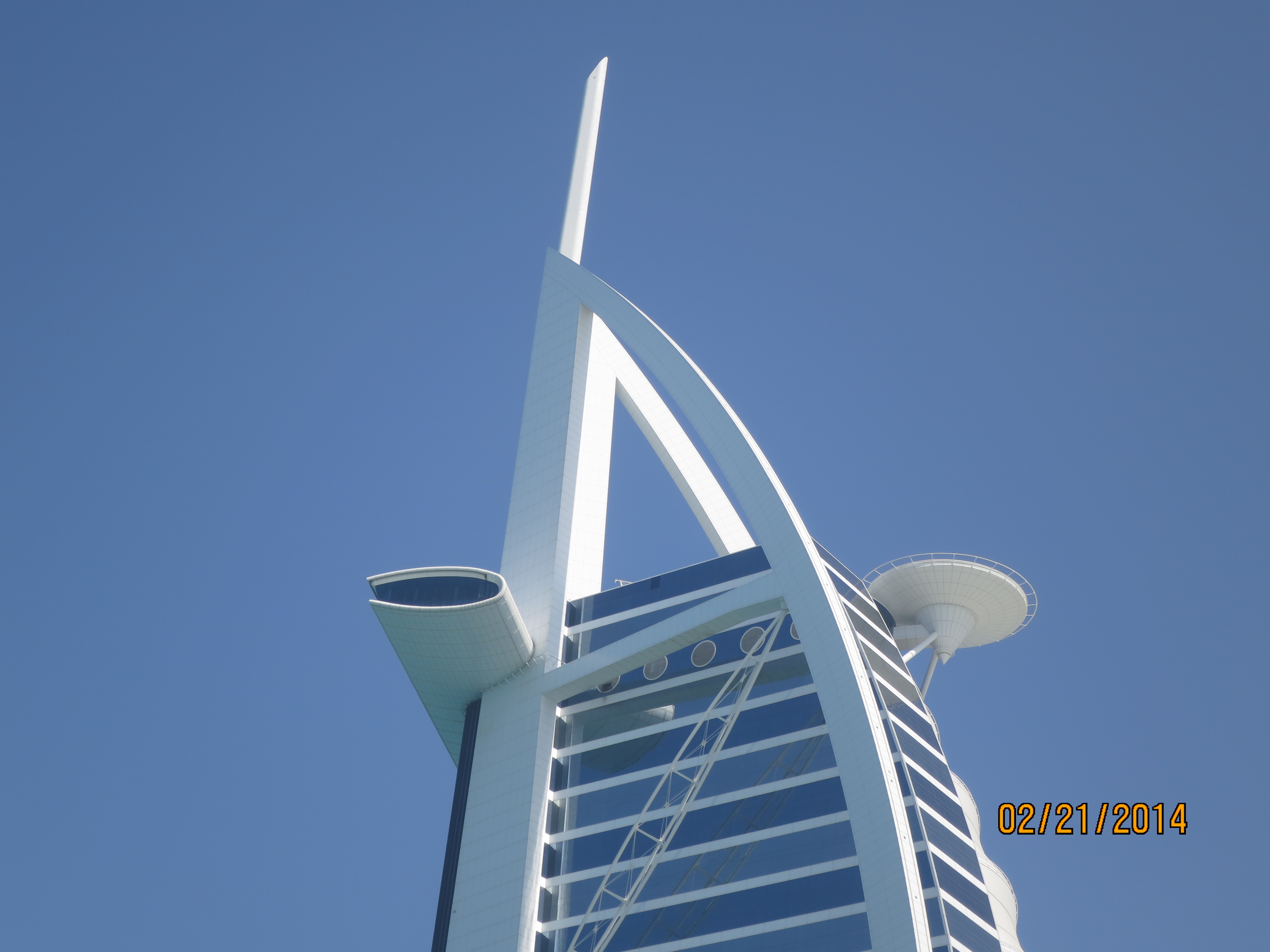
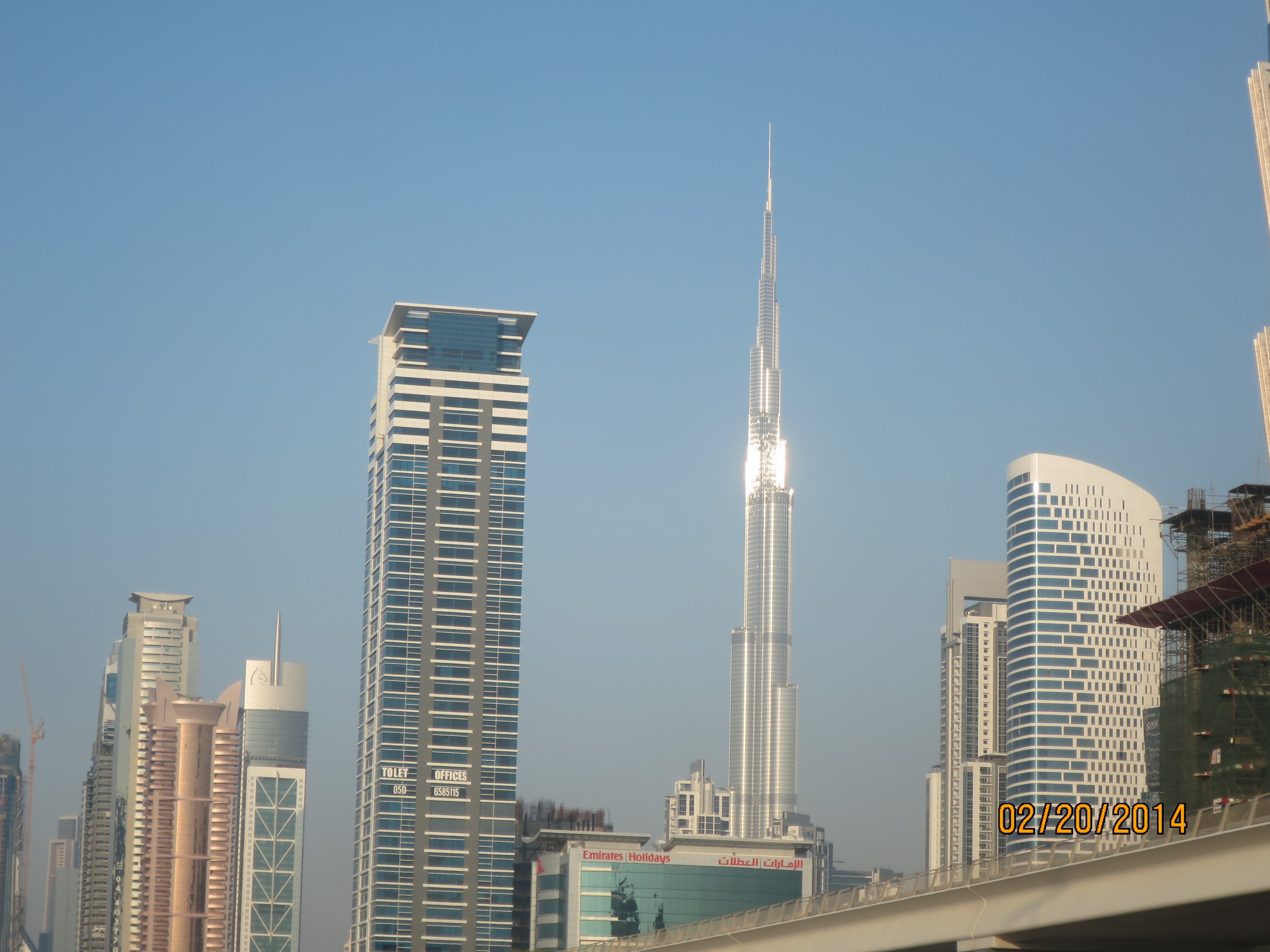
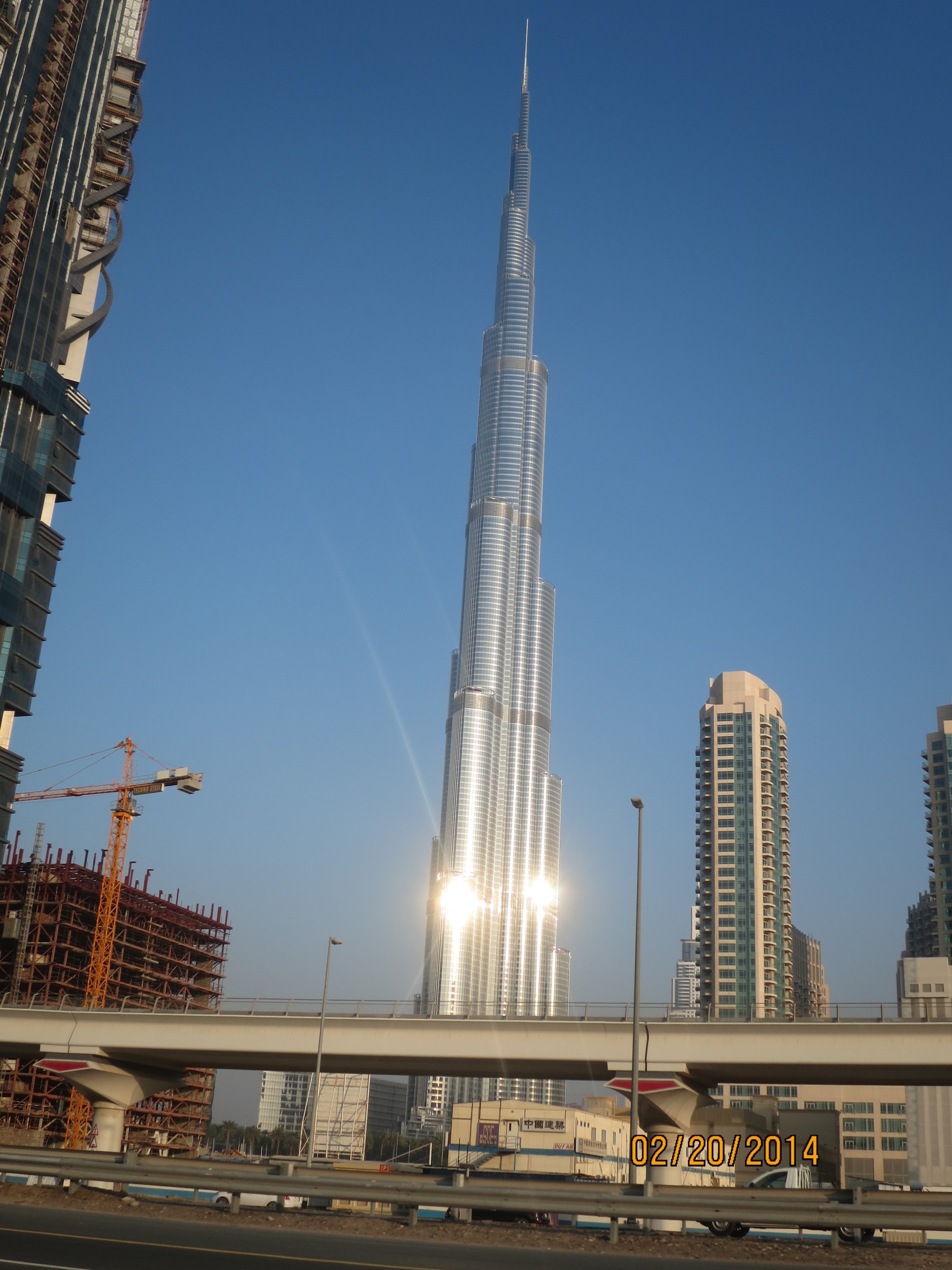
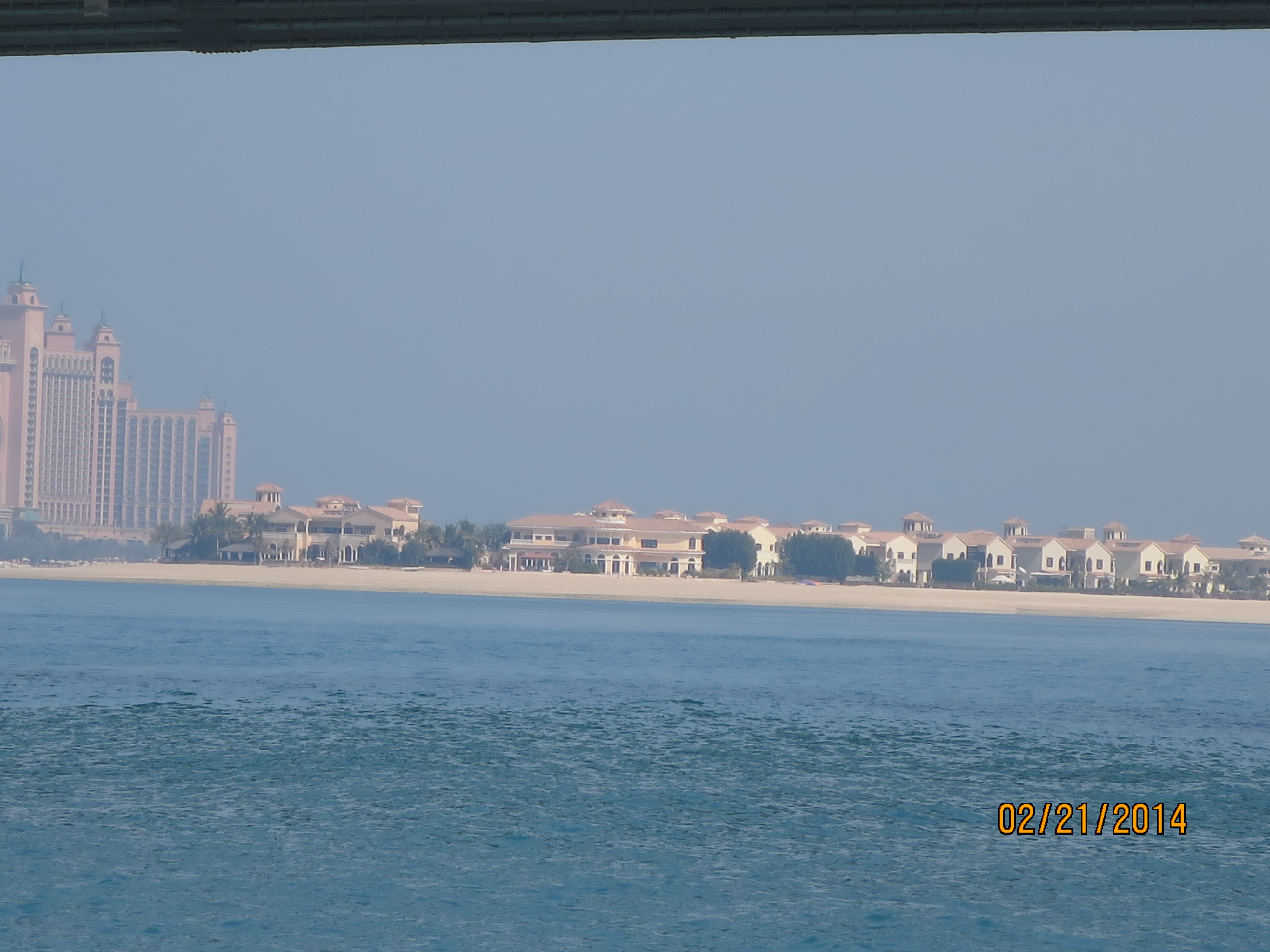
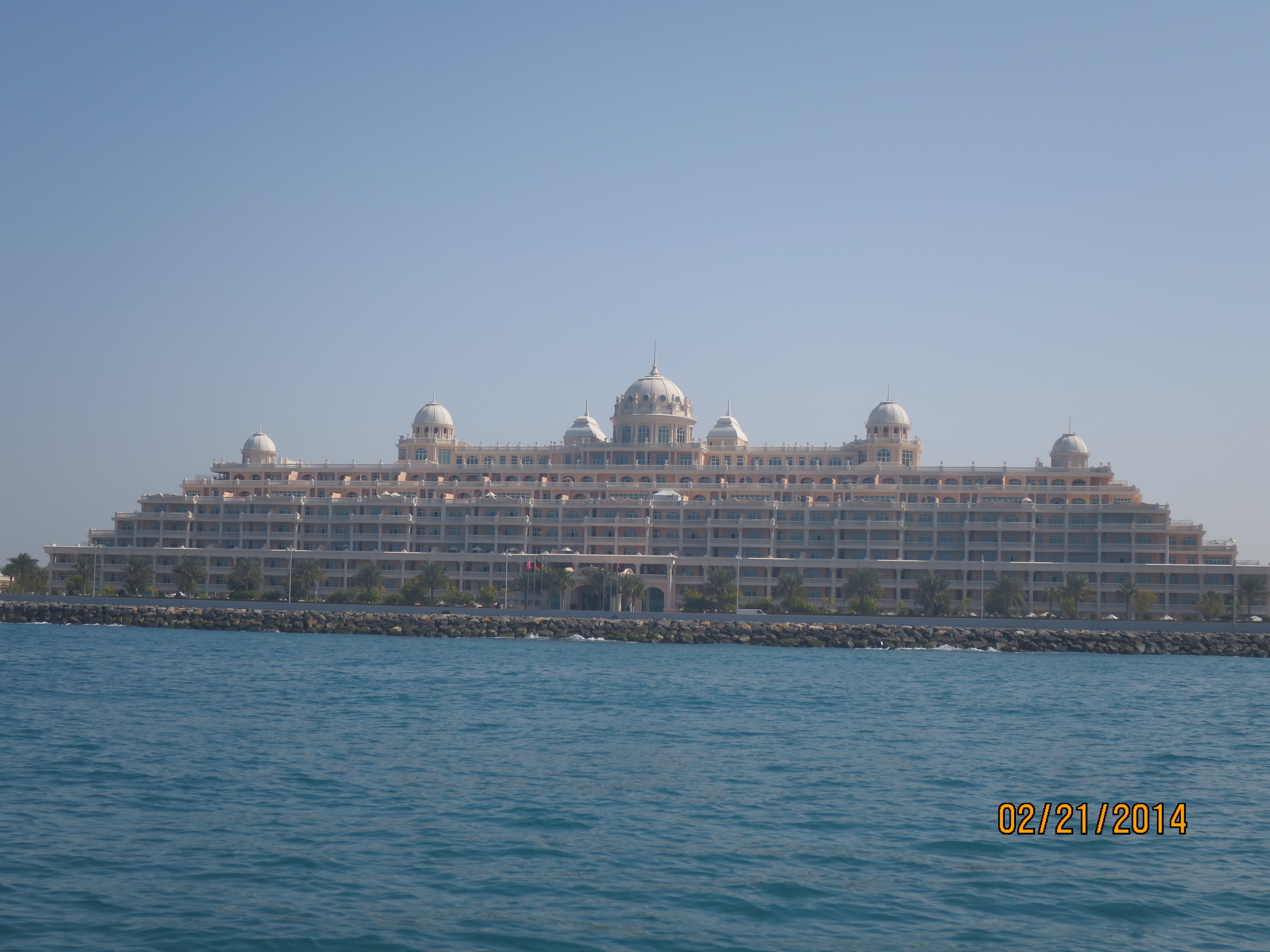
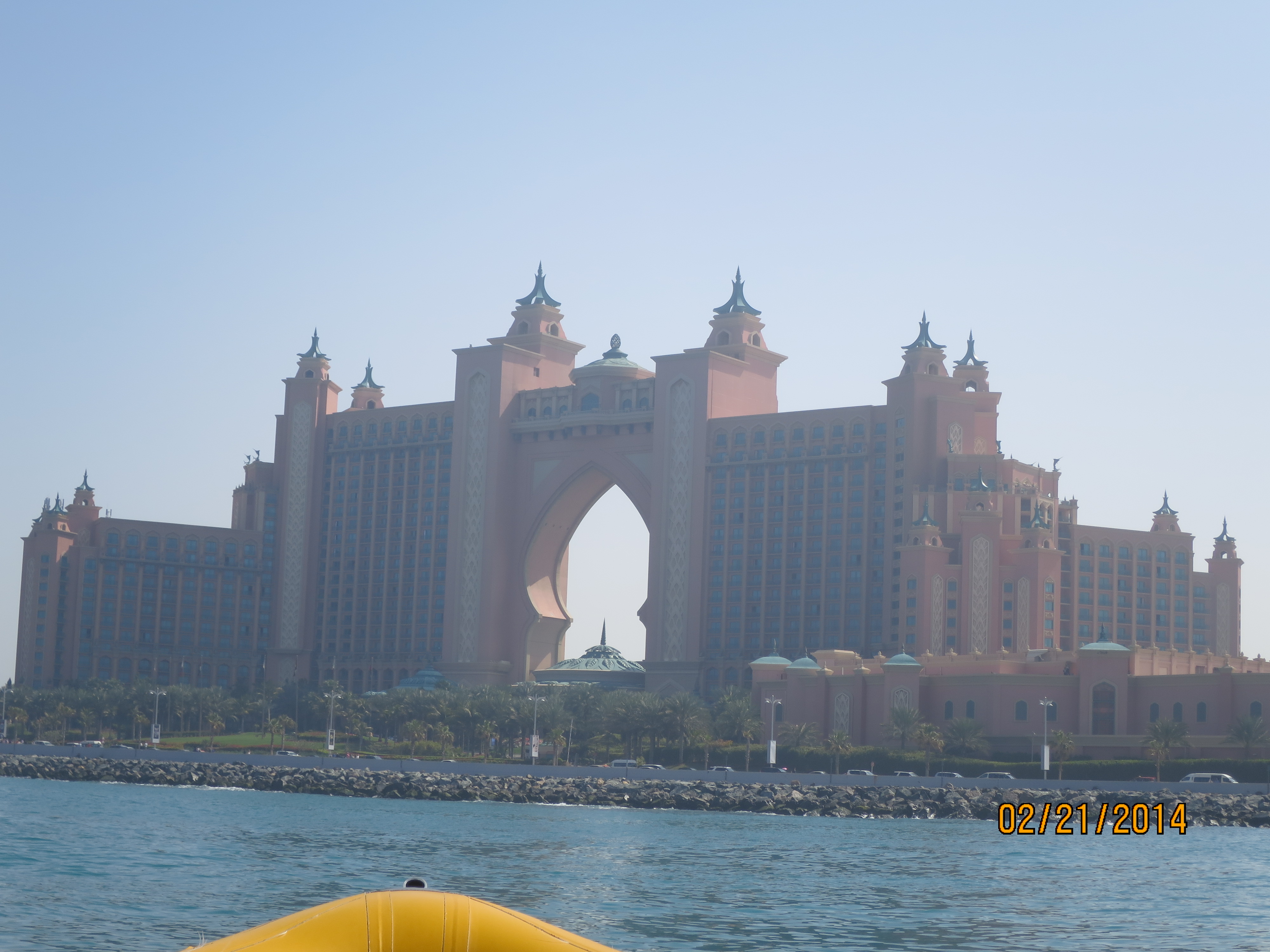
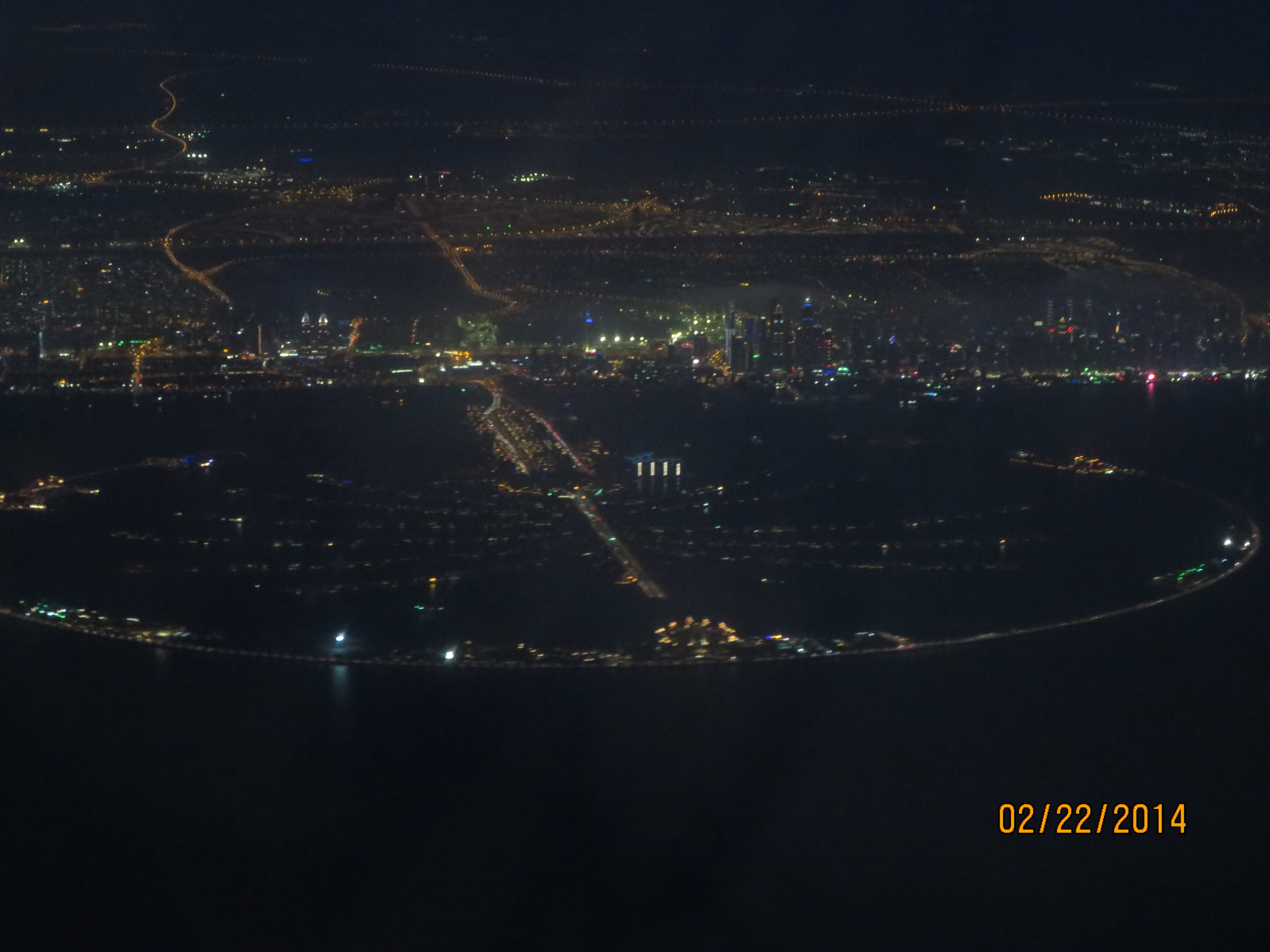
Wow. Those massive structures will make exciting archeological finds….they are unbelievably massive. and to be built on unfirm terra firma!
Thanks for the great tour–
Marian